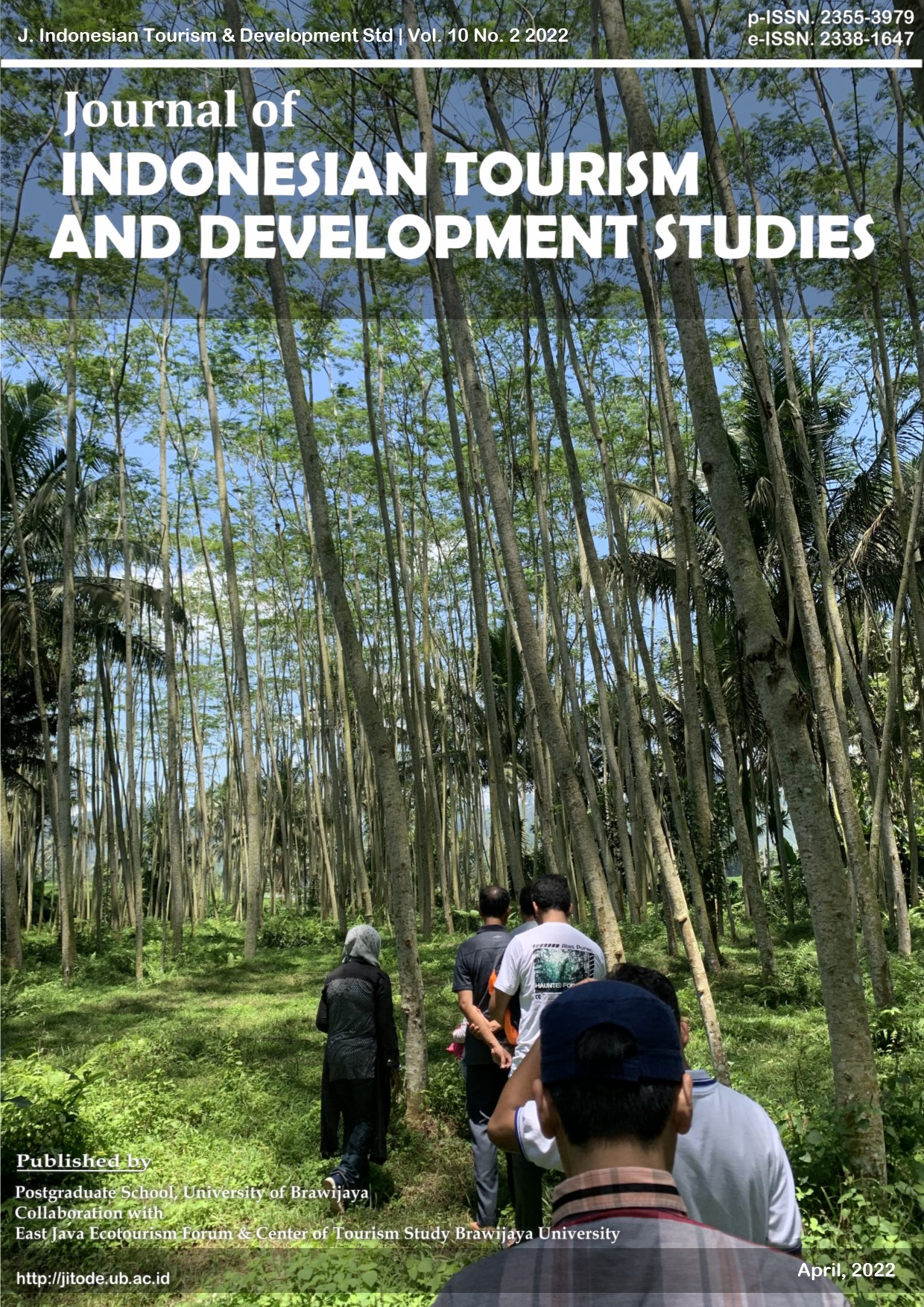Ethnobotany of Homegarden in The Island of Gili Iyang, Sumenep Regency
DOI:
https://doi.org/10.21776/ub.jitode.2022.010.02.02Abstract
This study aimed to assess the ethnobotany of home gardens and lad-use units in Gili Iyang Island, Sumenep Regency. It is expected for future strategic issues, such as global warming mitigation, biodiversity conservation, and food security. This study used an observational method with informal and semi-structured interviews with an indigenous community in Gili Iyang that has a homegarden or yard and uses the plants within for their daily life. Data were analysed by using the Used Values (UVs) and Index of Cultural Significance (ICS). The results showed that there were 63 types of plants located in two places (in the land unit and the homegarden). The community of Gili Iyang widely used the plant of Zea mays L. as the staple food (UVs=1.0), Borrasus flabellifer L. that produce sap (UVs = 0.9), and Lannea coromandelica (Houtt.) Merr.t) for land fence and animal food (UVs 0.9). In the area of the house yard, several plants are often used by the people of Gili Iyang, including the Mangifera indica L for its fruit (UVs=0.8), Piper betle L. for its medicinal use (UVs=0.7), and Manilkara zapota (L.) P. Royen for its fuitr (UVs=0.7). The three-highest ICs were Cocos Nucifera L, Borrasus flabellifer L., and Zea mays L for 162, 136, and 105, respectively, due to their multipurpose uses. Taniyan Lanjheng house and Pamengkang (homegarden) as local custom need to be conserved to support the sustainable cultural and plant conservation effort in Gili Iyang.
Downloads
Published
Issue
Section
License
Copyright (c) 2022 Journal of Indonesian Tourism and Development Studies

This work is licensed under a Creative Commons Attribution 4.0 International License.
Authors who publish with this journal agree to the following terms:- Authors retain copyright and grant the journal right of first publication with the work simultaneously licensed under a Creative Commons Attribution License that allows others to share the work with an acknowledgement of the work's authorship and initial publication in this journal.
![]()
- Authors are able to enter into separate, additional contractual arrangements for the non-exclusive distribution of the journal's published version of the work (e.g., post it to an institutional repository or publish it in a book), with an acknowledgement of its initial publication in this journal.
- Authors are permitted and encouraged to post their work online (e.g., in institutional repositories or on their website) prior to and during the submission process, as it can lead to productive exchanges, as well as earlier and greater citation of published work (See The Effect of Open Access).
Â
Â


















